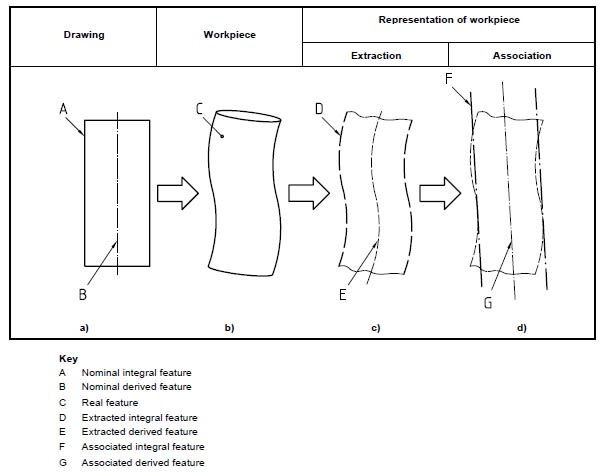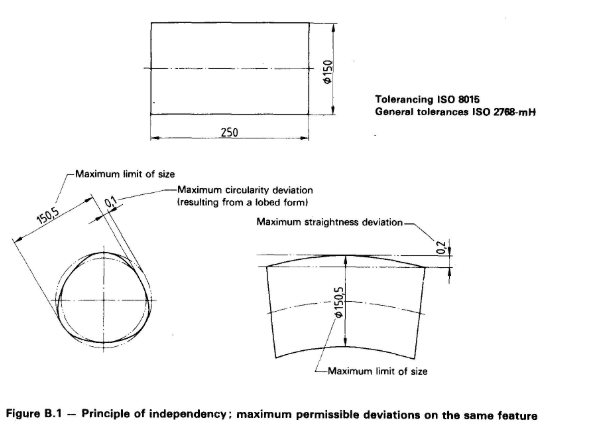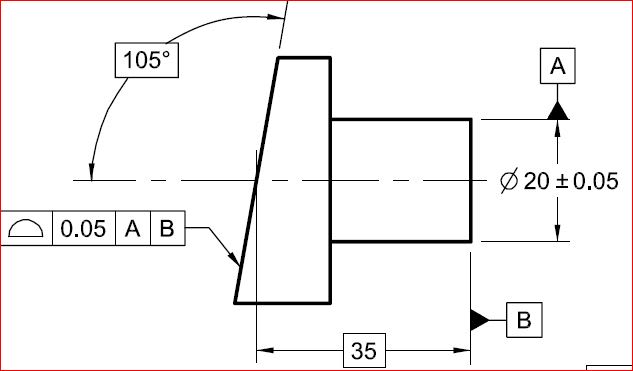Navigation
Install the app
How to install the app on iOS
Follow along with the video below to see how to install our site as a web app on your home screen.
Note: This feature may not be available in some browsers.
More options
Style variation
-
Congratulations TugboatEng on being selected by the Eng-Tips community for having the most helpful posts in the forums last week. Way to Go!
You are using an out of date browser. It may not display this or other websites correctly.
You should upgrade or use an alternative browser.
You should upgrade or use an alternative browser.
ISO question
- Thread starter Kedu
- Start date
- Status
- Not open for further replies.
- Thread starter
- #3
Belanger said:the picture you give is very similar to the one shown in SAE's "Ultimate Pocket Guide -- ISO GPS."
In SAE material, is it shown with position or profile?
My basic confusion is:
I do not know when the position is applied to the median feature and when is applied to the integral feature or surface?
Could a planar surface "accept" both?
Should I understand that in this particular figure, only integral surface is applicable?
Sorry -- the ISO guide I was referring to has the same part as your picture, but with position. It describes the tolerance zone in the same way that we would interpret profile (two parallel planes that control location, orientation, and also form/flatness).
This application of position does not deal with the "median" idea.
John-Paul Belanger
Certified Sr. GD&T Professional
Geometric Learning Systems
This application of position does not deal with the "median" idea.
John-Paul Belanger
Certified Sr. GD&T Professional
Geometric Learning Systems
According to ISO 1101, when position is used in the way given by the OP, the "extracted (actual) surface shall be contained between two parallel planes" spaced apart by the amount given in the tolerance frame.
John-Paul Belanger
Certified Sr. GD&T Professional
Geometric Learning Systems
John-Paul Belanger
Certified Sr. GD&T Professional
Geometric Learning Systems
pmarc
Mechanical
- Sep 2, 2008
- 3,248
The picture below comes from already withdrawn ISO GPS standard (14460-1:1999), but I believe it should help to understand terminology:

Regarding Kedu's picture, J-P is correct by saying that position in this case wouldn't make any difference. In ISO position can be applied to derived features (when applied to features of size) or to nominally flat integral features (surfaces). This is different from Y14.5, where position can only be applied to features of size.

Regarding Kedu's picture, J-P is correct by saying that position in this case wouldn't make any difference. In ISO position can be applied to derived features (when applied to features of size) or to nominally flat integral features (surfaces). This is different from Y14.5, where position can only be applied to features of size.
pmarc,
Since ISO 14406-1 is withdrawn, do you know, by any chance, where did they move those picture? Which released (if any) ISO standard has now this explanation?
On the same token, I know ISO 8015: 1985 had a nice figure (2) where on a section view of a cylindrical surface showing maximum limit of size and maximum circularity deviation (lobed form).
For my life, I do not edit (KNOW) where this picture has been moved / which standard, because in ISO 8015 - 2011 is nowhere to be found.
Do you know, from the top of your head, where these good and instructive picture were moved. Hopefully, they were not just eliminated from the standards entirely.
Since ISO 14406-1 is withdrawn, do you know, by any chance, where did they move those picture? Which released (if any) ISO standard has now this explanation?
On the same token, I know ISO 8015: 1985 had a nice figure (2) where on a section view of a cylindrical surface showing maximum limit of size and maximum circularity deviation (lobed form).
For my life, I do not edit (KNOW) where this picture has been moved / which standard, because in ISO 8015 - 2011 is nowhere to be found.
Do you know, from the top of your head, where these good and instructive picture were moved. Hopefully, they were not just eliminated from the standards entirely.
pmarc
Mechanical
- Sep 2, 2008
- 3,248
ISO 17450-1:2011greenimi said:Since ISO 14406-1 is withdrawn, do you know, by any chance, where did they move those picture? Which released (if any) ISO standard has now this explanation?
I don't see this figure in any of the active standards that I have access to.greenimi said:On the same token, I know ISO 8015: 1985 had a nice figure (2) where on a section view of a cylindrical surface showing maximum limit of size and maximum circularity deviation (lobed form).
For my life, I do not edit (KNOW) where this picture has been moved / which standard, because in ISO 8015 - 2011 is nowhere to be found.
CheckerHater
Mechanical
ISO 2768-2 has something very similar:

"For every expert there is an equal and opposite expert"
Arthur C. Clarke Profiles of the future

"For every expert there is an equal and opposite expert"
Arthur C. Clarke Profiles of the future
I read in one of the ISO training materials I got today that the size limits alone provide a roundness control equivalent to approx. 30% of the diameter.
Not sure that is entirely true but it is how it is shown.
Looks like different authors have very different interpretations about this "built-in" roundness and when we should and when we should not have a separate control for roundness/circularity.
Not sure that is entirely true but it is how it is shown.
Looks like different authors have very different interpretations about this "built-in" roundness and when we should and when we should not have a separate control for roundness/circularity.
- Status
- Not open for further replies.
Similar threads
- Question
- Replies
- 9
- Views
- 14K
- Locked
- Question
- Replies
- 5
- Views
- 3K
- Replies
- 75
- Views
- 14K
- Locked
- Question
- Replies
- 3
- Views
- 2K
- Locked
- Question
- Replies
- 21
- Views
- 10K

